Why Physical Therapy is Key to Long-Term Health
Physical therapy is often seen as a temporary solution for injuries or physical ailments, but its true value extends far beyond immediate recovery. Embracing physical therapy as a part of a long-term health strategy can lead to improved mobility, reduced pain, and enhanced overall well-being. In this blog, we will explore the many reasons why incorporating physical therapy into your health regimen is essential for sustaining long-term health benefits.
Understanding Physical Therapy
Physical therapy, or physiotherapy, focuses on enhancing and restoring functional ability and quality of life. It addresses movement dysfunctions through various techniques, making it essential for recovery from injuries and surgeries.
At its core, physical therapy involves a series of tailored exercises and modalities designed by trained professionals to suit individual needs. Whether recovering from a severe injury or managing chronic conditions, understanding how physical therapy works can empower patients. The evaluation process often involves meticulous assessments that lead to personalized therapy plans.
Moreover, physical therapy advocates for self-management techniques. This means patients learn not only to overcome their current issues but also to prevent future complications. Education about body mechanics, including how to lift, walk, or even sit correctly, can significantly reduce the risk of injury.
The Role of Physical Therapy in Injury Prevention
Engaging with a physical therapist can help identify and correct movement patterns that may lead to injuries. Preventative strategies not only keep you active but also save costs associated with injury treatment.
A key aspect of injury prevention is understanding risk factors. Trained professionals assess individual biomechanics and lifestyle, providing valuable recommendations tailored to personal strengths and weaknesses. By incorporating specific strength and flexibility exercises tailored to these assessments, patients can enhance their overall physical resilience.
Physical therapy also plays a critical role in athletic training. Many athletes work closely with physical therapists not only to recover from injuries but also to enhance performance and prevent future setbacks. This proactive approach fosters a mindset of continual improvement, vital for anyone looking to achieve long-term fitness goals.
Long-Term Benefits of Consistent Therapy
Regular sessions lead to sustained improvements in strength, flexibility, and endurance. These long-term benefits can contribute to better performance in daily activities and sports.
The beauty of maintaining a consistent therapy routine lies in its cumulative effect. Over time, even small, incremental improvements can lead to significant enhancements in overall physical capability. For instance, increased muscle strength not only aids in daily tasks like lifting groceries but also builds confidence in one’s physicality.
Additionally, continuous therapy fosters an environment where wellness becomes a priority. Patients begin to understand their bodies' signals better and learn how to respond appropriately to them. This introspection, coupled with professional guidance, encourages healthier lifestyle choices and increased physical activity outside therapy sessions.
Furthermore, engaging in a long-term relationship with a physical therapist means that therapy evolves with you. As fitness levels improve or lifestyle changes occur, therapists adjust the approach to remain aligned with patient goals, ensuring therapy continues to be relevant and beneficial.
Mental Health and Physical Therapy
Physical therapy isn't just about the body; it also benefits mental health. Physical activity releases endorphins, improving mood and reducing stress and anxiety, further reinforcing the mind-body connection.
The therapeutic environment itself can significantly affect mental well-being. Engaging with a supportive therapist who understands the emotional side of recovery can create a safe space for personal growth. Many patients report feeling a sense of empowerment and renewed purpose as they progress through their therapy.
Additionally, the skills learned in physical therapy—such as mindfulness and body awareness—often translate to improved coping mechanisms in everyday life. Patients become more adept at managing stress and anxiety through physical activity, leading to a holistic improvement in mental and emotional health.
Finding the Right Physical Therapist
Choosing a therapist who specializes in your specific needs can make a significant difference in your recovery and long-term results. Building a trusting relationship with your therapist encourages better communication and effective treatment.
It's essential to consider not only qualifications but also personal compatibility. A therapist’s approach should resonate with you, fostering an environment of comfort and support. Many people find it beneficial to consult with multiple therapists before settling on one that feels like the right fit.
Integrating Physical Therapy into Your Lifestyle
To maximize the benefits of physical therapy, consider creating a lifestyle that includes regular exercises prescribed by your therapist and activities that promote movement and flexibility.
One effective strategy is to integrate short exercise routines into your daily activities. Simple tasks, like using stairs instead of the elevator or taking brief walking breaks, can maintain the physical momentum fostered during therapy sessions. These adjustments not only enhance physical capacity but also establish a routine that prioritizes health.
Moreover, establishing a support network can significantly enhance your commitment. Involving friends or family members in physical activity turns it into a social event, making exercising enjoyable and encouraging accountability. By embedding therapy principles into daily life, the transition from therapy to long-term health needs becomes seamless and sustainable.
Investing in Your Long-Term Health
Incorporating physical therapy into your healthcare routine can be transformative, helping you maintain an active lifestyle and preventing future injuries. By prioritizing physical therapy, you invest not just in recovery, but in the overall quality of your life. Remember, health is a journey, and physical therapy is a key partner in that journey toward sustainability and well-being.


